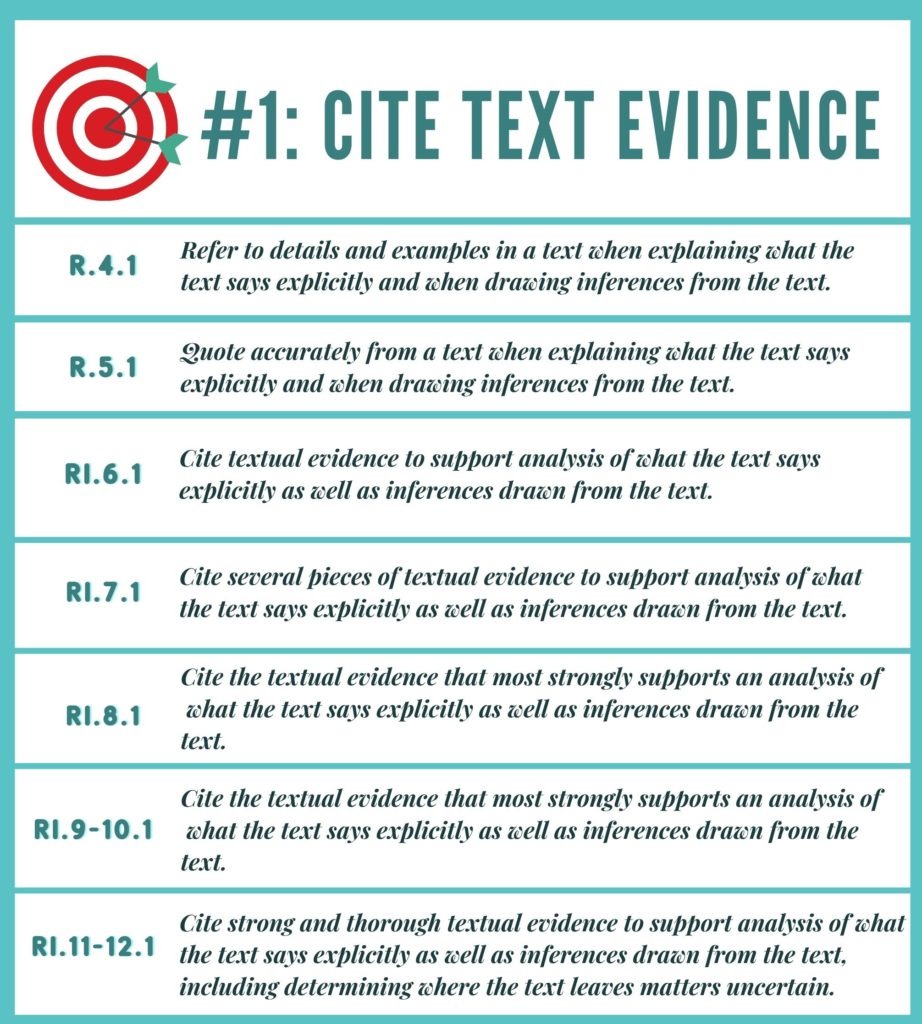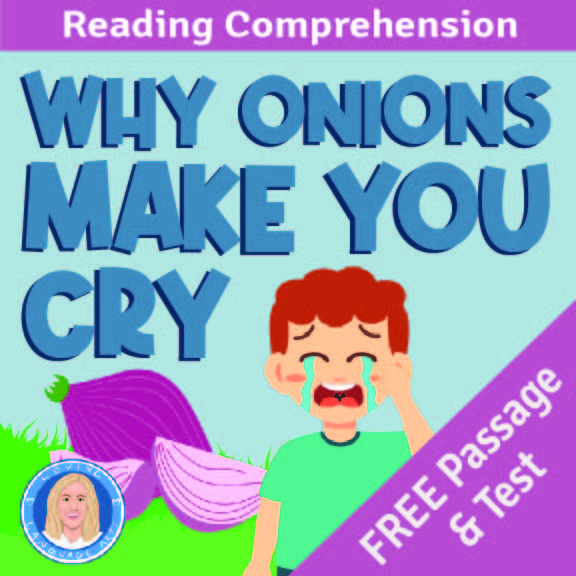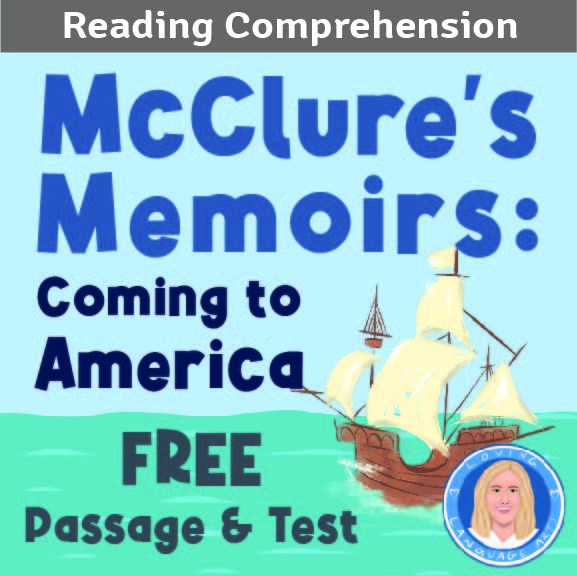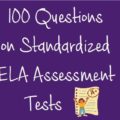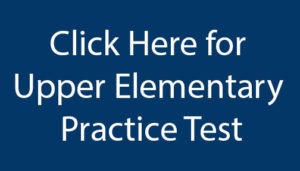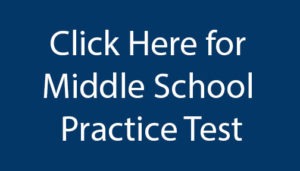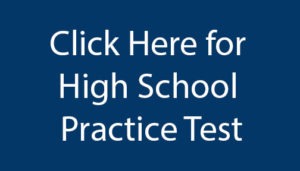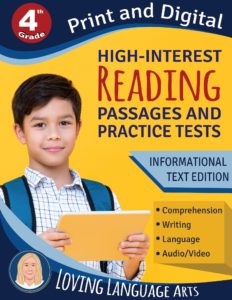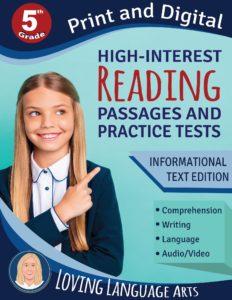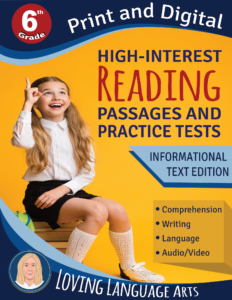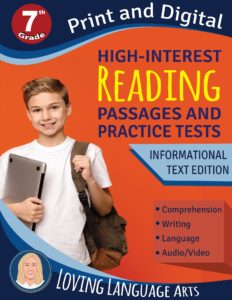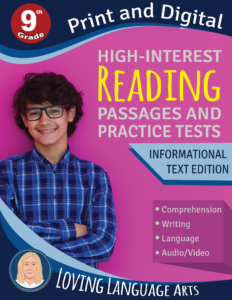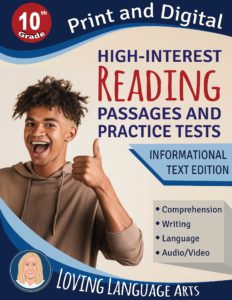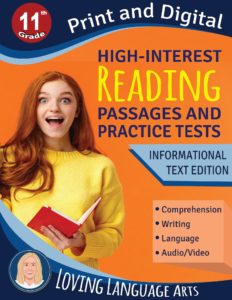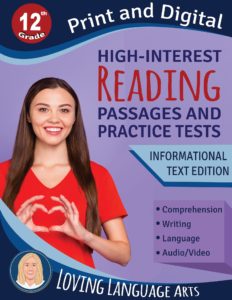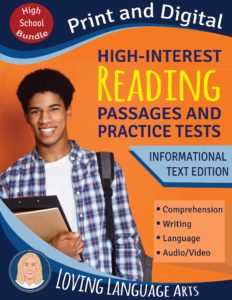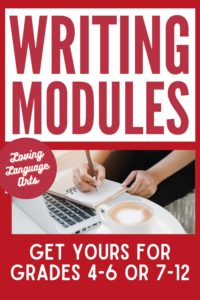The 10 Reading Informational Text Assessment Test Targets (Progressing from Grades 4 to 12)
No matter which state (or U.S. Territory) you live in, your state’s ELA standards include these 10 Reading Informational Text Assessment Test Targets. It’s important to know what they are, and how they progress through the grades, because the items in your state’s ELA assessment tests are aligned to them! (Check out these 100 Standardized ELA Test Questions.)
Maybe you live in one of the 41 states that adopted the Common Core State Standards (and renamed them, by the way). They’re often called the College and Career Ready Standards. Or maybe you don’t live in one of those states (or territories), but, either way, these 10 targets will be on English Language Arts reading assessment tests EVERYWHERE – no matter where you reside. And, I’m not talking just in the spring season. I’m talking all year round (they never end!).
I am an experienced English teacher, as well as an experienced ELA Assessment Writer, so I want to share with you what I’ve learned !

The states that adopted the Common Core State Standards are shown below. Those states are likely to call the Reading Informational Text “RI” Standards (RI.1, RI.2, etc.). But if you’re in a different state, such as Texas for instance, they’re called something else (such as LA.6.6.C in Texas). Either way, they all target the same skills. I am going to show you the top 10 targets for reading informational text in grades 4-12 and how each target progresses logically from 4th to 12th grade.
How are these top 10 targets assessed? They used to be assessed mainly by PARCC (Partnership for Assessment of Readiness for College and Careers) or SBAC (Smarter Balanced Assessment Consortium). But, currently, only about 1/3 of the states use one of their assessments. (California is one that uses SBAC and calls their standards the Common Core State Standards.) The other 2/3 of the states have developed their own tests.
But, as an experienced assessment writer who has written tests for states across the nation (they pay me to write tests!), I can tell you that all reading tests are EXTREMELY SIMILAR. They use similar targets (what they want students to demonstrate) and similar stems (how questions are asked). And I’m here to tell you the targets and stems most commonly used.
Here are the 10 Reading Informational Text Assessment Targets that are assessed on ELA assessment tests WORLDWIDE, based on the College and Career Ready Standards.
Below you will see a tab for each target, showing the progression of the target from Grade 4 up to Grade 12, . The target is the skill the student should demonstrate.
According to the College and Career Ready Standards, students must demonstrate that they can go back to the text to find evidence to support their inferences and conclusions. That’s what Target #1 is all about!
© Copyright 2010. National Governors Association Center for Best Practices and Council of Chief State School Officers. All rights reserved.
In grades 4 and 5, it’s called “Main Idea.” In grades 6 and up, it’s called “central idea.” It’s the central, unifying element of the story the author is trying to convey.
In addition to one main central idea, there can be more central ideas, such as the central idea of each paragraph. That’s what Target #2 is all about!
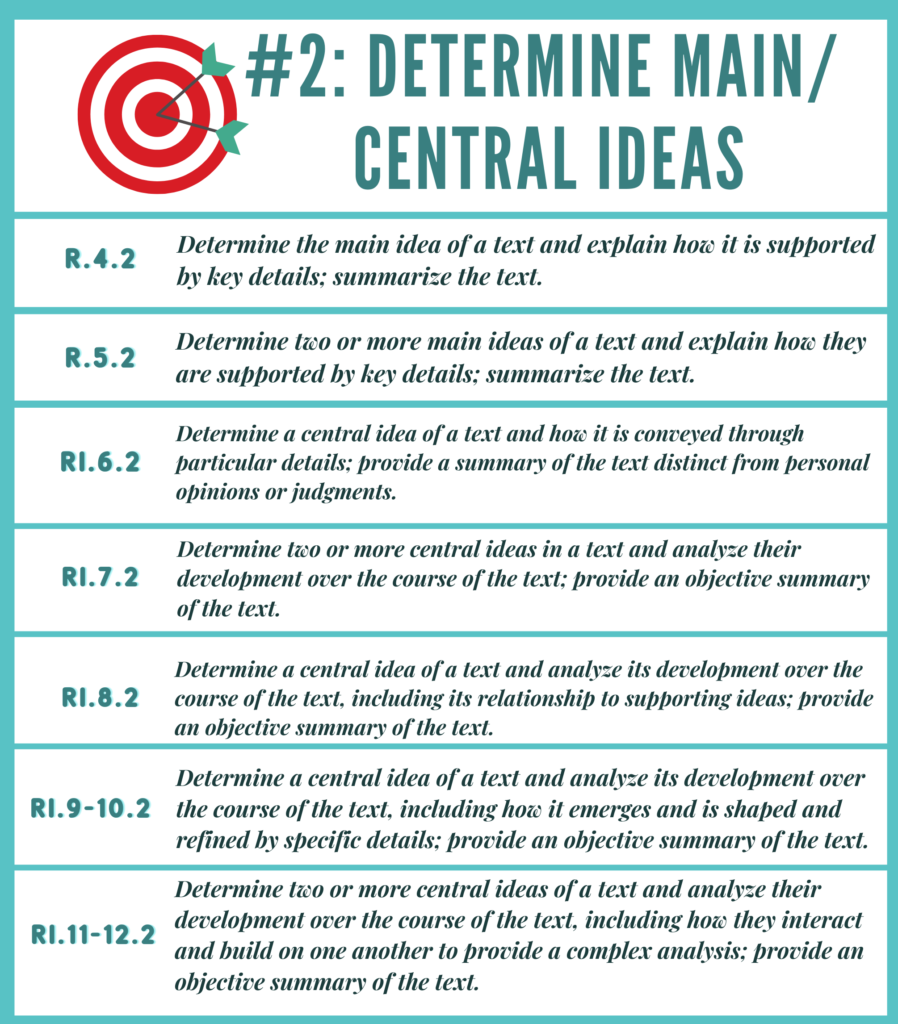
© Copyright 2010. National Governors Association Center for Best Practices and Council of Chief State School Officers. All rights reserved.
This target is a little harder to hit. It requires looking at the big picture to see how an author elaborates on an idea and makes connections throughout the text.
Teach students to look for the examples the author uses to explain a concept, and how the examples connect to each other or have something in common. When you provide anecdotal stories that students can analyze, it makes hitting this target easier.
© Copyright 2010. National Governors Association Center for Best Practices and Council of Chief State School Officers. All rights reserved.
Students must demonstrate they can determine word meanings in context by looking at the word’s root/affix, connotation, denotation, analogies, word relationships, synonyms & antonyms, and figurative meanings.
As they get older (8th grade and up), students are asked how the word choice affects meaning and tone.
Additionally, students will be assessed on their comprehension of higher-level tiers of words, which are advanced domain-specific words. See page 33 of Common Core’s Appendix A for further information.
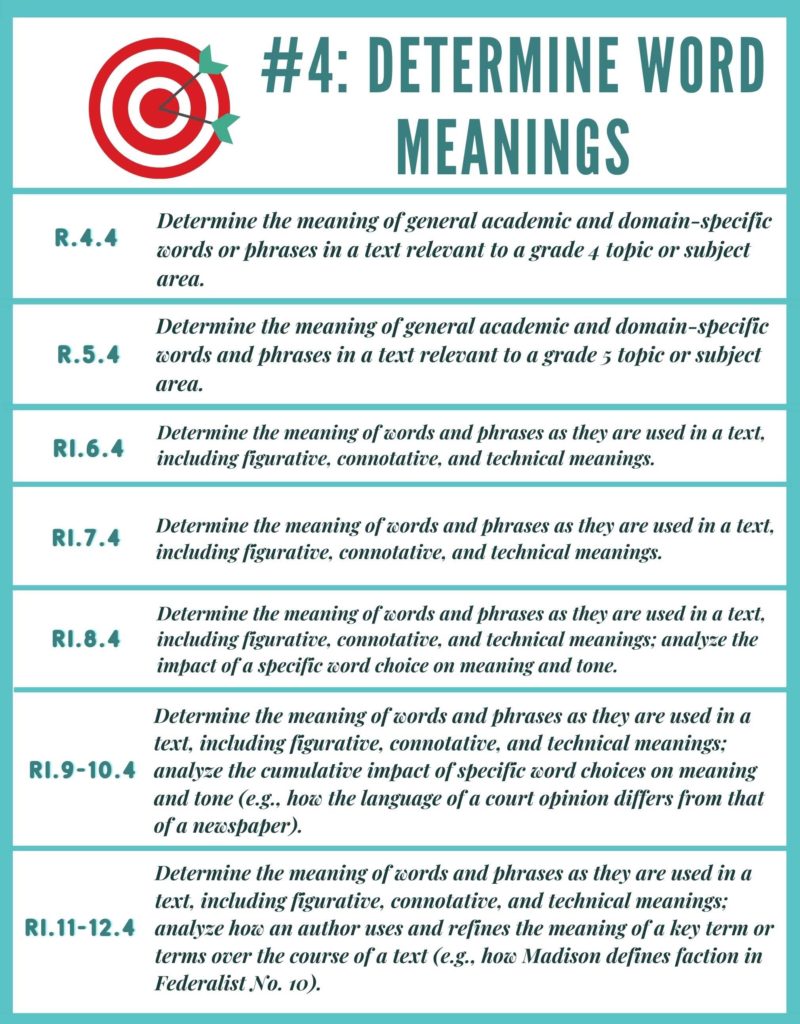
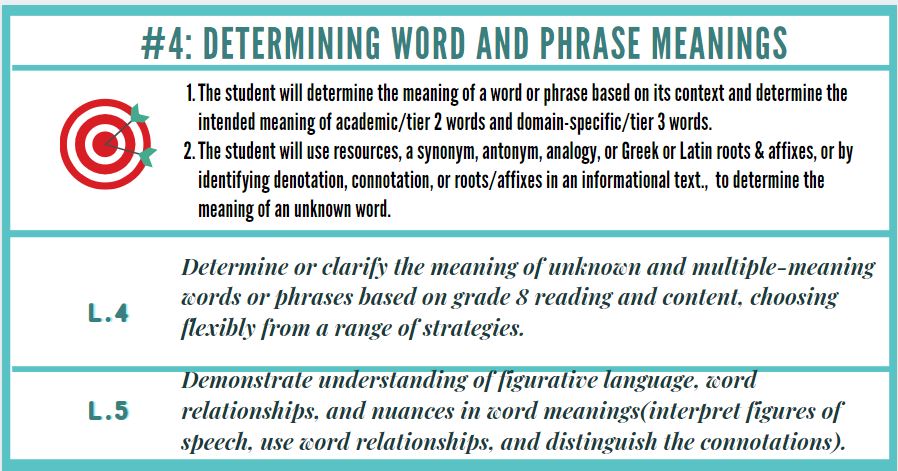
© Copyright 2010. National Governors Association Center for Best Practices and Council of Chief State School Officers. All rights reserved.
This standard is all about how the author has structured the text, and how that structure impacts the meaning of the text.
The student analyzes how some part (sentence, paragraph, chapter, or section) contributes to the whole.
The student may analyze how the conclusion ties to the introduction, the purpose of the sections, why a paragraph ends in a certain sentence, and more.
The student should analyze how the author presents information (and why): chronological order, compare-and-contrast, cause-and-effect, description, argumentative, anecdotal, problem-and-solution, and more.
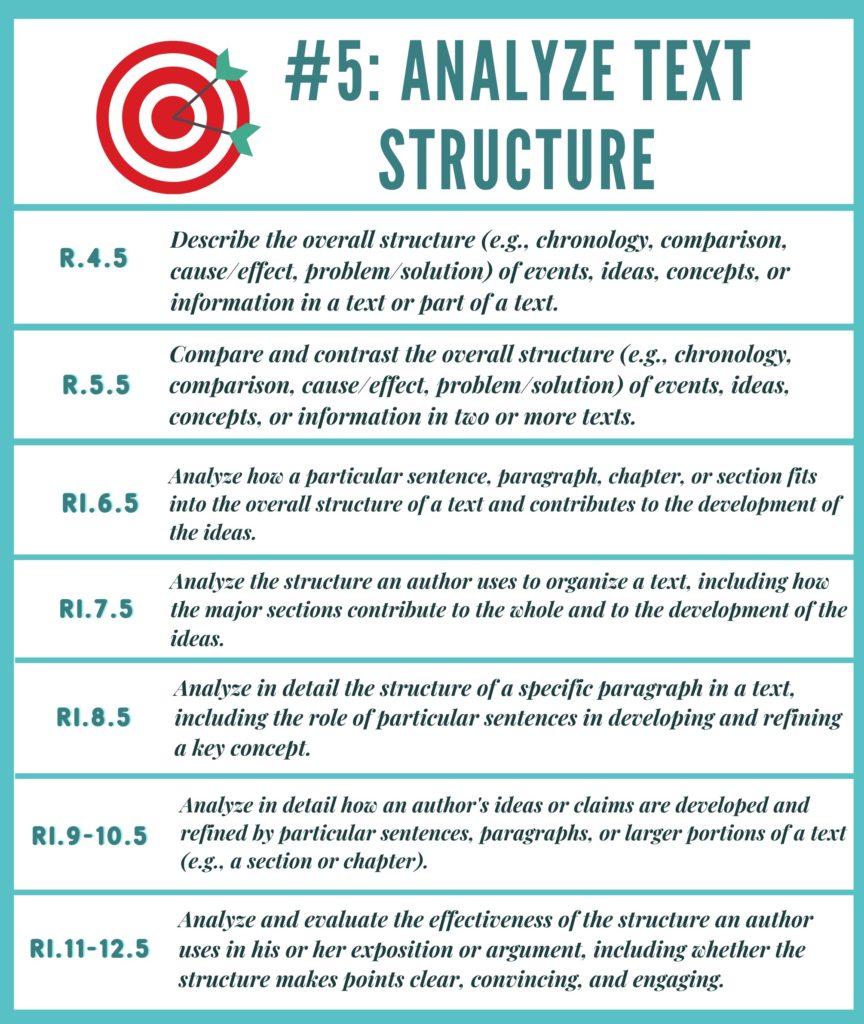
© Copyright 2010. National Governors Association Center for Best Practices and Council of Chief State School Officers. All rights reserved.
This is another case in which students need to ask themselves why the author chose to write a certain way. The student also needs to think about why the author even wrote the piece in the first place. The student should also consider what it is about the author’s experience that has influenced his or her perspective.
The student should look for opinions and reasoned judgments. Students can look to see what information has been emphasized, and notice if it seems like any information may have been left out or repeated. The author’s purpose could be to persuade, to argue a point, to defend a position, simply describe, try to show cause and effect, influence. etc.
In the context of science and technical subjects, the student should look at why the author discussed a procedure or experiment, and again look for opinions and reasoned judgments as clues as to what their purpose is.
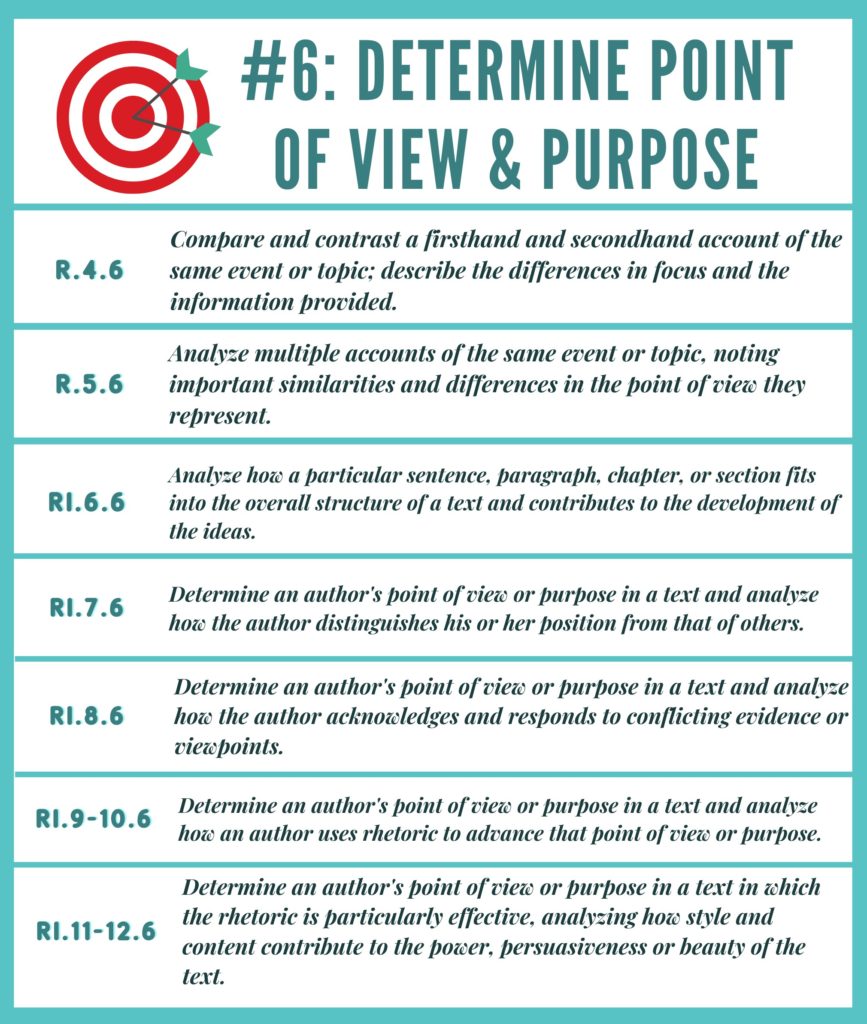
© Copyright 2010. National Governors Association Center for Best Practices and Council of Chief State School Officers. All rights reserved.
This is most of the students’ FAVORITE target: integrating visuals and media. This target is all about how the author incorporates visual elements into a text to add to the reader’s understanding. It is also about an author presents data. And, it’s about how the student integrates multiple sources on the same topic for a coherent understanding.
The student needs to determine how one’s understanding is enriched by the use of elements such as: graphs, charts, flowcharts, timelines, diagrams, models, tables, photographs, videos, maps, gifs, cartoons, etc.
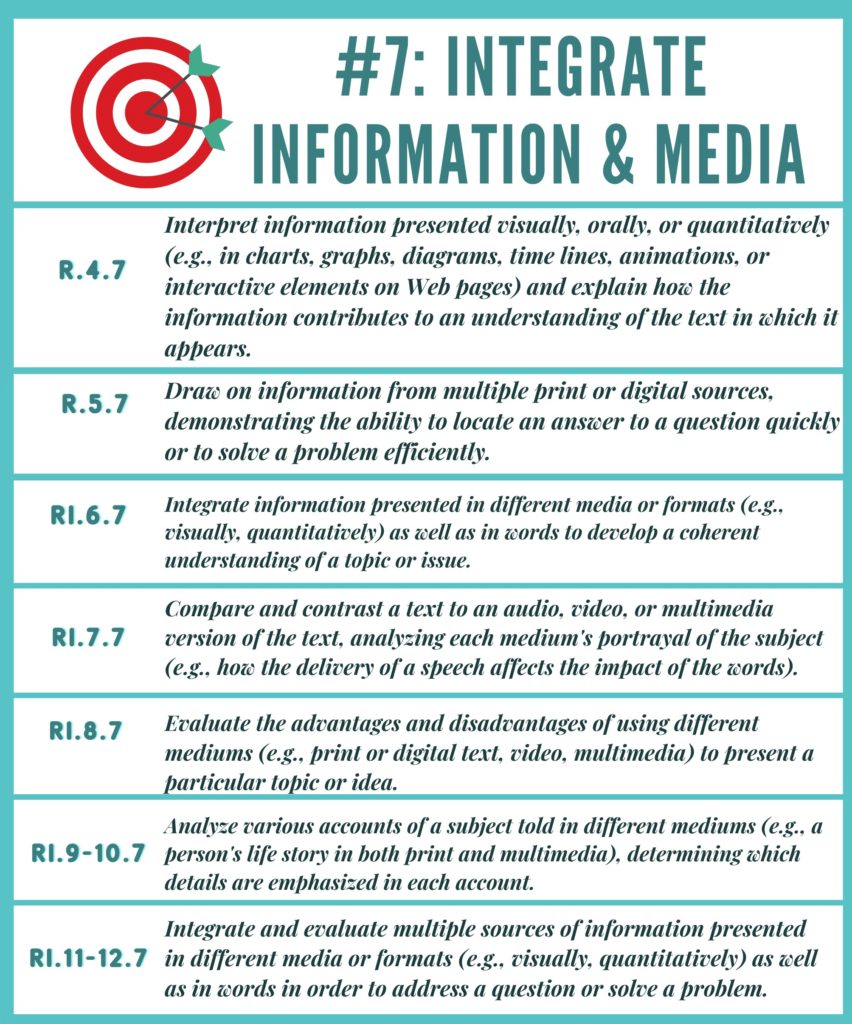
© Copyright 2010. National Governors Association Center for Best Practices and Council of Chief State School Officers. All rights reserved.
Another big shift that came with Common Core is emphasis on the rhetoric and reasoning of the ARGUMENT. In the context of reading arguments, students should be looking for claims, counterclaims that address the opposition, reasoning, evidence, facts, opinions, reasoned judgments, or lack thereof.
The makers of Common Core want students to get into the habit of questioning what people say and not just believing what they read without demanding credibilty, reliability, and logical reasoning based on factual evidence. Readers and writers must use evidence!
HERE ARE SOME IMPORTANT TERMS TO KNOW:
“Credibility” is being able to be trusted & believed because you have been honest, provide evidence, and don’t abuse rhetorical persuasive techniques.
“Reliability” is proving you have the experience and knowledge to give you the authority to make statements about a topic. To learn more about the special place of argument in the Common Core Standards, please refer to the Appendix A to the standards.
“Loaded language” is another thing, especially in the content areas, that students need to be on the lookout for. Loaded language is “rhetoric used to influence an audience by using words and phrases with strong connotations associated with them in order to invoke an emotional response and/or exploit stereotypes” according to Wikipedia.
“Reasoned Judgments” should also be on the radar. In the history of reading assessments, students have been asked about facts and opinions over and over. But, something new with Career-and-College-Ready Standards is asking them about reasoned judgments. Reasoned judgments are fact/opinion hybrids. Once you learn about them, you start to notice them on television, in newspapers, on the radio, etc. like crazy.

© Copyright 2010. National Governors Association Center for Best Practices and Council of Chief State School Officers. All rights reserved.
Commonly Used Stems:
Here are some possible stems for short answer questions:
-
What inference (or conclusion) can be made/drawn about the [provide relevance of evidence/elaboration to support claims, concepts, and ideas/etc.]? Explain using key evidence from the text to support your answer.
-
Based on the text, [what conclusion can be drawn/what can a reader conclude] about [the author/the speaker/the narrator/or provide individual’s name]’s [thoughts/beliefs] about [provide individual’s name/provide information about individual/idea/event in the text]? Explain using key evidence from the text to support your answer.
Here are some possible stems for Part A/Part B evidence-based questions:
-
PART A: Which of these inferences (or conclusions) about how [provide relevance of evidence/elaboration to support claims, concepts, and ideas/etc.] is supported by the text?
-
PART A: What inference (or conclusion) can be made/drawn about how [provide relevance of evidence/elaboration to support claims, concepts, and ideas/etc.]?
-
PART B: Which [sentence(s)/paragraph(s)/section(s)] from the text best support(s) your answer in Part A? OR Which [sentence(s)/paragraph(s)/section(s)] from the text best [show(s)/tell(s)/describe(s)] the [inference made/conclusion drawn] in Part A?
This standard is all about comparing how different authors present the same information or describe the same event from different points of view.
In the context of science and technical subjects, it is more about how you get more information on the same topic by delving into hands-on experiments or simulations, watching others do the experiments or simulations, watching a video, or viewing multimedia sources.
In the context of social studies and history, it is more about looking at primary sources as well as secondary sources to get a richer, more robust, possibly more accurate, representation of what really happened or how people in the past viewed the events in the context of when they lived. Some primary sources are: eyewitness accounts, news stories, letters, photos, journals, diary, etc.
In high school, students are expected to analyze seminal, foundational, seventeenth-, eighteenth-, and nineteenth-century U.S. Documents.

© Copyright 2010. National Governors Association Center for Best Practices and Council of Chief State School Officers. All rights reserved.
Students should be reading “Literary Nonfiction,” which is: a type of prose that employs the literary techniques usually associated with fiction or poetry to report on persons, places, and events in the real world.
Students in content areas should be reading complex, domain-specific texts. Across the curriculum, this standard synthesizes all the other standards. But what is “text complexity band”? Please see the Appendix A to the Common Core State Standards to see how they describe it. Essentially, it is text that is challenging yet provides enough context and clues for students to apply strategies to understand it, if they are motivated enough to do so.
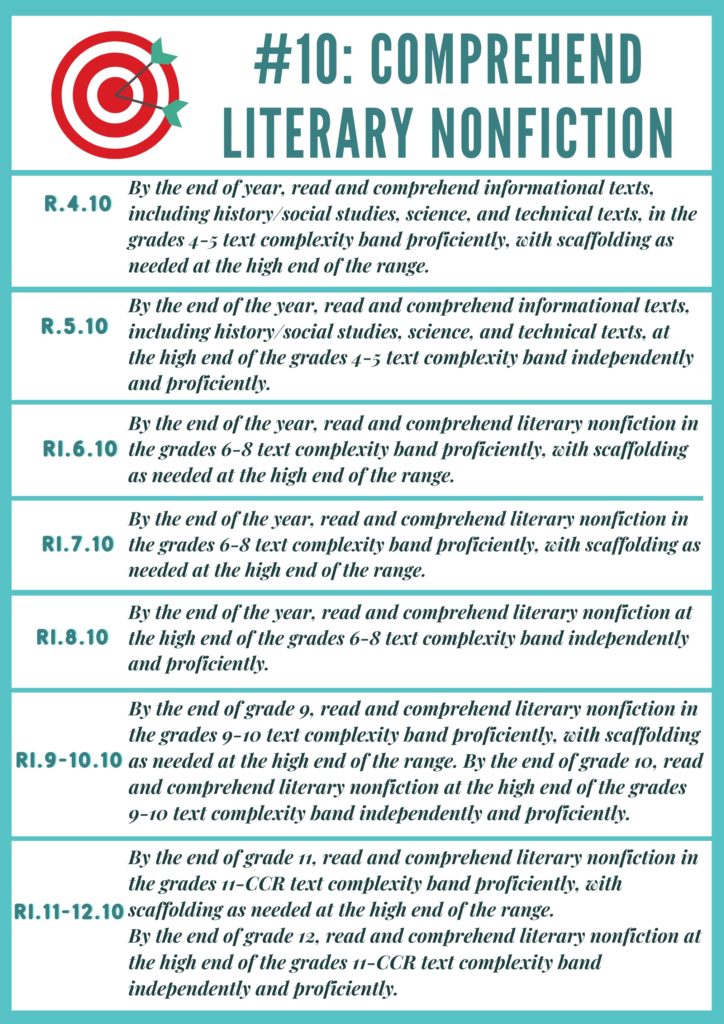
© Copyright 2010. National Governors Association Center for Best Practices and Council of Chief State School Officers. All rights reserved.
Click below for FREE ELA PRACTICE TESTS – each targeting specific reading, writing, language, and speaking/listening/viewing standards.
Check out the GRADE-SPECIFIC ELA TEST PREP BOOKS shown to the right in the sidebar (if desktop) and below (if mobile). The practice tests target EVERY grade-specific Reading Informational Text Standard (and more). An added bonus is that the kids LOVE the passages! Easy-print or self-grading – you decide.
And here are some 1-pager practice tests that are FREE and aligned to specific reading targets. So, try one out today! Your students will thank you.
The 6th Grade Practice Tests Test Prep Workbook “is a high quality, beautifully-aligned resource. It is no-frills, to the point, yet high-interest for students. It is helping us prepare for standardized testing in a hybrid, synchronous, difficult year.”
How about save this pin to your “ELA Test Prep” or “Reading Informational Text” Board so that you can come back to this post again?



